IAC News
IAC News Extra.7, December 18,2014
Japan Society of Civil Engineers International Activities Center Dec. 7, 2014 IAC News Extra.7
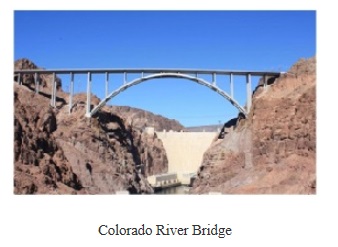
Hoover Dam Bypass Project - Construction of the Colorado River Bridge
◆Introduction
The Colorado River Bridge is the longest concrete arch bridge in North America. Opened in October 2010, it is the centerpiece of the Hoover Dam Bypass Project (a 5.6km long section of highway). The jobsite is partially located in a National Recreation Area. The surrounding area has a harsh desert climate with scorching hot days (where temperatures reach over 40 degrees Celsius) and arid environmental conditions. This noteworthy arch bridge was constructed by a joint venture between Obayashi Corporation of Japan and PSM Construction USA, Inc. (a US business with Japanese investment).
◆Historic Hoover Dam and Hoover Dam Bypass Project
The Colorado River Bridge is located just below the Hoover Dam, which is designated as a US National Historic Landmark. It is 578m-long, 26.8m-wide, and carries four lanes of traffic as well as a pedestrian walkway. The 323m span of its concrete arch is the longest in North America and the fourth longest in the world. The arch segments were individually constructed with cast-in-place concrete utilizing temporary stays and pylons. The twin arch ribs are connected by steel struts. The pier columns were built from precast elements and the superstructure consists of steel tub girders and a concrete deck.
The Hoover Dam itself was completed in 1936, 75 years before the completion of the new bridge. The reservoir created by the dam has a storage capacity of about 40 billion tons, which far exceeds the total capacity of all dams in Japan. At the time of construction, the United States commanded construction technology of the highest level. For example, a total of 320 million cubic meters of concrete was placed in less than two years. Cooling pipe technology was used for the first time in the world to remove heat from the mass concrete. The dam, located just an hour outside of Las Vegas, has played a crucial role in the development of Las Vegas over many decades.
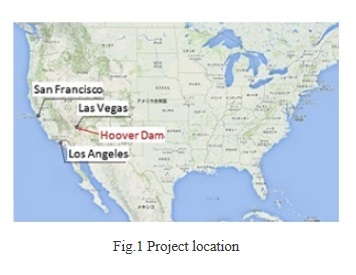

Since its construction, the dam has provided a Colorado River crossing for US Highway 93 (US 93), which was routed across the top of the dam. This highway is now part of a major commercial corridor forming part of the North American Free Trade Agreement (NAFTA) route linking Mexico and Canada. Rising traffic volumes combined with the sharp curves in the vicinity of the dam crossing often lead to significant back-ups, increasing travel time and accident risk. The resulting traffic congestion has also imposed a significant burden on the surrounding area. The Hoover Dam Bypass project will greatly facilitate traffic flow on US 93.
The problems plaguing US 93 were recognized as early as the 1960s: low vehicle speeds; accident potential and resulting loss of life; and contamination of the dam. Over the years prior to design and construction of the new bridge, various studies of routing, environmental processes, and possible bridge designs were implemented.


◆Construction of North America's Longest Concrete Arch Bridge
Construction of the bridge arch was an extreme engineering challenge. A number of unique and technically complex erection methods had to be implemented to deal with the structure itself and the surrounding environment. The long-span arch ribs were constructed using cast-in-place cantilever erection with temporary stay cables and pylons. The piers, the highest of which reaches 87m, were erected from precast segments. And the mass concrete had to be placed in temperatures exceeding 40 degrees Celsius.
The bridge has a highly indeterminate structure, so 3D analysis was required to complete the design of the 323m long arch. Arch deflections during erection, which were predicted by the 3D analysis, were managed by implementing geometric controls during the work and these became one of the most difficult challenges in the project. Analysis was further complicated by the steel struts that connect the two arch ribs. From an engineering point of view, the results of 3D erection analysis formed the key document that gave direction to a detailed construction procedure (totaling over 1,800 construction steps in all).
Despite all the challenges that arose, which included difficulties in hiring workers during a boom in hotel construction in downtown Las Vegas as well as safety and environmental issues not faced domestically in Japan (rattle snakes and scorpions were observed at the jobsite), strong winds, and extreme heat, the arch was closed in August 2009. A spirit of mutual collaboration among engineers from the US and Japan led to successful completion of the bridge in August 2010. The Colorado River Bridge has now become a new landmark for visitors who come to see the historic Hoover Dam.
The joint venture between Obayashi and PSM Construction USA has earned the highest praise for successful completion of this project. The American Society of Civil Engineering (ASCE) annually recognizes an exemplary civil engineering project as the Outstanding Civil Engineering Achievement (OCEA) of the year. The Colorado River Bridge was named the winner of the 2012 OCEA Award by the ASCE.

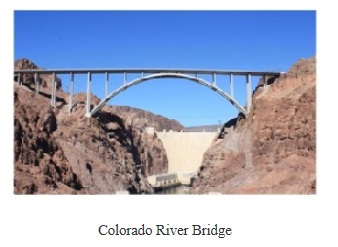
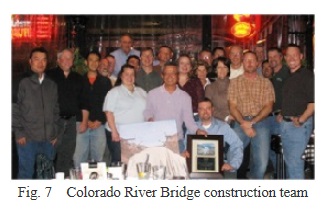 The successful completion of this bridge relied on close cooperation among many engineers from start to finish of construction, with some of us working on the project for five years or more. As Japanese engineers, we are very proud and honored to have been given this opportunity to be involved with a remarkable bridge project. One of the greatest accomplishments for a civil engineer is the opportunity to work with counterparts from other parts of the world on projects such as this one. We hope that this project will encourage you to challenge yourselves; however young you are, look abroad and be prepared to travel overseas to take up the opportunities that await you.
The successful completion of this bridge relied on close cooperation among many engineers from start to finish of construction, with some of us working on the project for five years or more. As Japanese engineers, we are very proud and honored to have been given this opportunity to be involved with a remarkable bridge project. One of the greatest accomplishments for a civil engineer is the opportunity to work with counterparts from other parts of the world on projects such as this one. We hope that this project will encourage you to challenge yourselves; however young you are, look abroad and be prepared to travel overseas to take up the opportunities that await you.
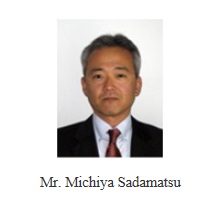 General Manager, Australia Office, Overseas Business Division, Obayashi Corporation
General Manager, Australia Office, Overseas Business Division, Obayashi Corporation
Sadamatsu joined Obayashi Corp. in 1987. After working at a number of construction sites within Japan, he became involved in subway and high speed railway construction sites in Taiwan in 1991. In 2004, he moved to the Colorado River Bridge project in the USA, serving as general manager of the project from 2006 onward. He received the Continuing International Contribution Award from JSCE in 2013.
 Manager, San Francisco Office, Overseas Business Division, Obayashi Corporation
Manager, San Francisco Office, Overseas Business Division, Obayashi Corporation
Takatoku joined Obayashi Corp. in 1996, and worked at a number of construction sites for pre-stressed concrete bridges and similar projects. He also spent time in the bridge design division within Japan. In 2006, he moved to the Colorado River Bridge project in the USA as a site manager. Currently, he serves as manager of the company's San Francisco Office.
◆Editorial note
Time goes by, festive season is coming soon. How was your year 2014?
In Japan, we had encouraging news, for instance, selection of Tokyo as host city of the 2020 Olympic Games. In other hand, there were serious natural disasters such as attacks of large scale typhoons or volcanic eruption. I realize that there are many things to do by us, civil engineers.
I am renewing my determination to move forward step by step in the coming year and therefore to enjoy coming festive weeks.
I hope you all a Merry Christmas and a Happy New Year.(S.O.)
